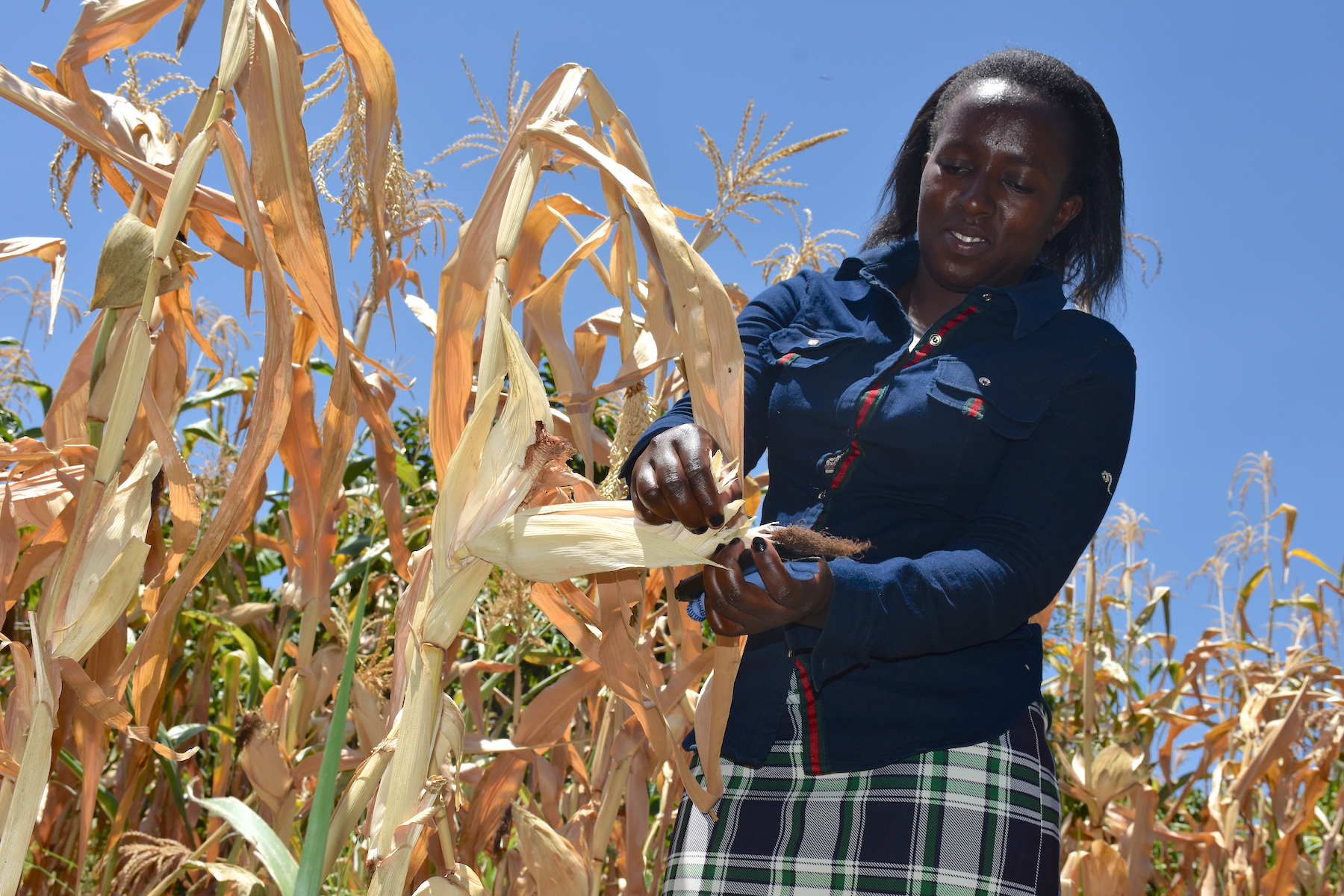NAIROBI, Kenya (CIMMYT) — Smallholder farmers in sub-Saharan Africa lose up to a third of their grain after harvest because they often use poor grain storage technologies and ineffective drying practices. Staples like maize stored on-farm are exposed to infestation by insects and fungi. These can lead to contamination with mycotoxins, in particular aflatoxins, poisonous food toxins produced by Aspergillus fungi.
At high doses, aflatoxins can kill. Prolonged exposure to aflatoxins can impact consumers’ health, suppressing immune systems, hindering child growth and even causing liver cancer. Kenya is a particular hotspot for aflatoxins, as regular studies show widespread contamination along the food chain, from maize grain to milk and meat.
Preliminary findings of a study by USAID-funded Feed the Future Innovation Lab for Food Processing and Post-Harvest Handling (FPL) suggest that innovative low-cost grain drying and storage technologies such as hermetic bags and hygrometers could prevent post-harvest crop losses and harmful aflatoxin contamination.
The initial results were shared at a workshop in Nairobi on October 25, 2018, as part of the FPL project, which aims to develop and disseminate affordable and effective post-harvest technologies suited to the African smallholder farmer. This project is a collaboration between the International Maize and Wheat Improvement Center (CIMMYT), Kenya Agricultural & Livestock Research Organization (KALRO) and Purdue University.
A study conducted between May 2017 and May 2018 in Kiboko, Kenya, compared the performance of various hermetic storage containers and bags by different manufacturers with farmers’ usual storage practices. Researchers measured maize grain quality parameters such as grain damage, weight loss in storage, fungal growth and mycotoxins, food quality and seed germination. The results showed hermetic bags were highly effective in averting grain loss for up to one year.
“If these bags are sealed properly, oxygen cannot get in or out. This creates an anaerobic environment that suffocates grain-damaging insects and prevents fungi from growing” says CIMMYT economist Hugo De Groote.
Making hermetic storage more accessible
The Africa Technical Research Center (ATRC) is involved in the development of some of the hermetic bags that were tested during the study. ATRC director Johnson Odera noted that most of the insect infestations start in the field. “When the farmer harvests and transports the maize home, the grain is already infested,” Odera explained. “The damage can be extensive depending on the level of infestation. One of the ways to minimize the losses, while keeping the food safe for consumption is to use hermetic bags”.
These bags, however, remain largely unavailable to smallholder farmers, according to the study. This is mainly due to farmers’ low awareness levels and the high cost of hermetic bags. Unlike normal storage bags that cost about $0.7 each, hermetic bags retail for $2 to $2.5.
A second study, conducted with maize producers and traders in Kakamega, western Kenya, suggests that dropping prices by 20 percent had the potential to increase sales by 88 percent.
This study further suggested that farmers can benefit a lot from using low-cost hygrometers to accurately measure moisture content in maize. Grain is quickly spoiled by fungi contamination if it is not dry enough when stored. One or two percent lower moisture levels can make a big difference in reducing aflatoxin contamination.
“Farmers could put maize grain samples in a plastic bag and insert low-cost hygrometers to read moisture content after temperature is stabilized in 15 minutes,” says Purdue University professor Jacob Ricker-Gilbert. “They then know if their grain is safe enough for storage or not. However, standard hygrometers cost around $100, which is out of reach for many small farmers.”
Purdue University, CIMMYT and KALRO conducted a market survey in 2017 among maize farmers and traders in Kenya to assess their willingness to buy low-cost hygrometers. The survey found that farmers were willing to pay an average price of $1.21 for a hygrometer, while traders said they would buy at $1.16 each. The project was able to get cheap and reliable hygrometers at less than one dollar, opening the door for possible commercialization. One company, Bell Industries, has started to market the devices as a pilot.
Raising farmers and policymakers’ awareness on appropriate storage and drying technologies is now a priority for scientists working on the FPL project, which will hopefully lead to less maize spoiled and better food safety.
 Innovations
Innovations 


